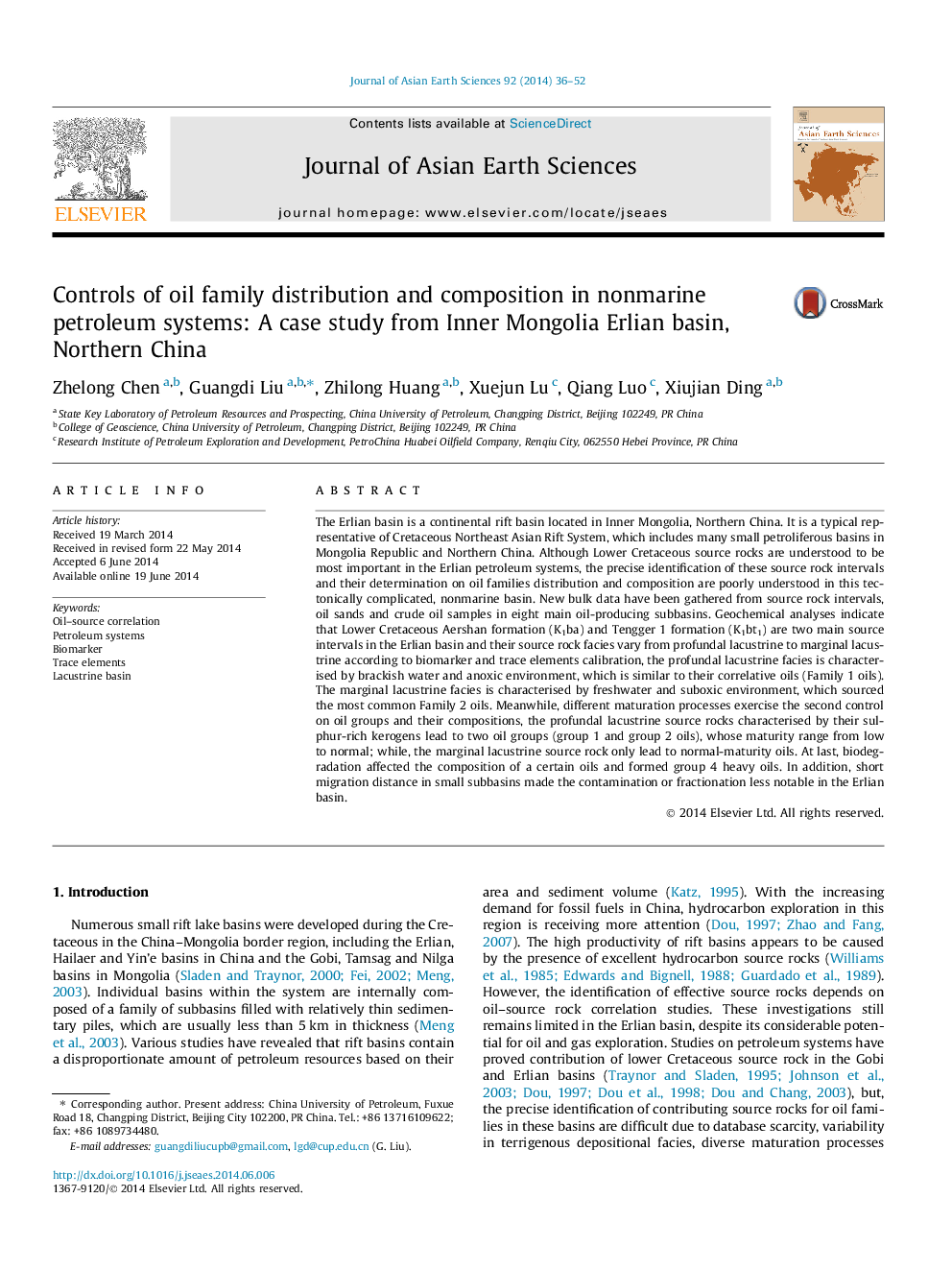| کد مقاله | کد نشریه | سال انتشار | مقاله انگلیسی | نسخه تمام متن |
|---|---|---|---|---|
| 4730520 | 1640376 | 2014 | 17 صفحه PDF | دانلود رایگان |
• Oil–source correlation studies were conducted in nonmarine petroleum systems.
• Source rock facies mainly control the distribution of oils and their composition.
• Different maturation process determined the composition of oil families.
• Biodegradation lead to some heavy oils.
• Fractionation is proved less notable in these small rift basins.
The Erlian basin is a continental rift basin located in Inner Mongolia, Northern China. It is a typical representative of Cretaceous Northeast Asian Rift System, which includes many small petroliferous basins in Mongolia Republic and Northern China. Although Lower Cretaceous source rocks are understood to be most important in the Erlian petroleum systems, the precise identification of these source rock intervals and their determination on oil families distribution and composition are poorly understood in this tectonically complicated, nonmarine basin. New bulk data have been gathered from source rock intervals, oil sands and crude oil samples in eight main oil-producing subbasins. Geochemical analyses indicate that Lower Cretaceous Aershan formation (K1ba) and Tengger 1 formation (K1bt1) are two main source intervals in the Erlian basin and their source rock facies vary from profundal lacustrine to marginal lacustrine according to biomarker and trace elements calibration, the profundal lacustrine facies is characterised by brackish water and anoxic environment, which is similar to their correlative oils (Family 1 oils). The marginal lacustrine facies is characterised by freshwater and suboxic environment, which sourced the most common Family 2 oils. Meanwhile, different maturation processes exercise the second control on oil groups and their compositions, the profundal lacustrine source rocks characterised by their sulphur-rich kerogens lead to two oil groups (group 1 and group 2 oils), whose maturity range from low to normal; while, the marginal lacustrine source rock only lead to normal-maturity oils. At last, biodegradation affected the composition of a certain oils and formed group 4 heavy oils. In addition, short migration distance in small subbasins made the contamination or fractionation less notable in the Erlian basin.
Journal: Journal of Asian Earth Sciences - Volume 92, 1 October 2014, Pages 36–52
